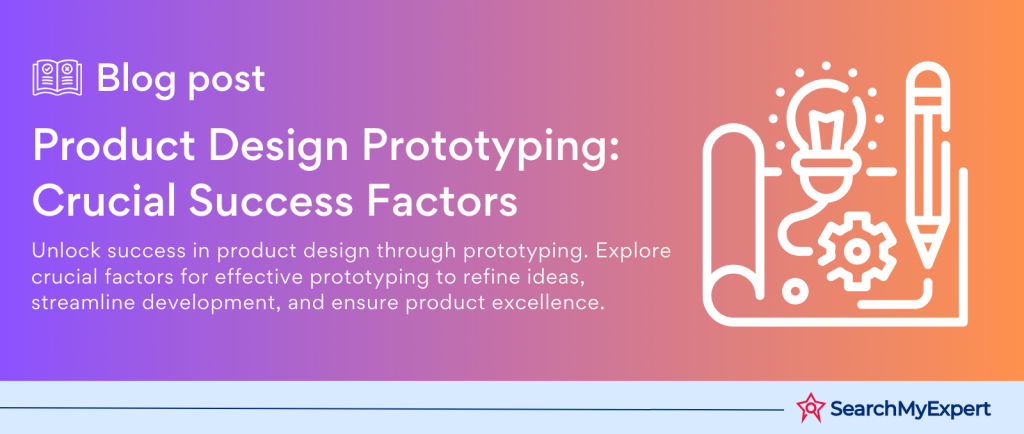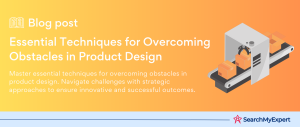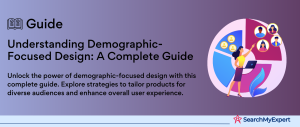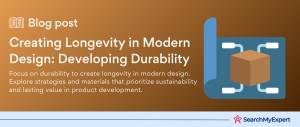Prototyping: A Cornerstone in Product Design
In the dynamic world of product design, the concept of prototyping stands out as a fundamental process, pivotal to transforming an idea into a tangible product. Prototyping, at its core, involves creating a preliminary model of a product that enables designers, developers, and stakeholders to visualize, test, and refine the concept before it goes into full-scale production. This approach not only streamlines the path from conception to realization but also significantly enhances the overall quality of the final product.
The Perils of Overlooking Prototyping
Neglecting the prototyping phase in product design can lead to dire consequences. Firstly, it increases the risk of overlooking potential design flaws, which are much easier and cost-effective to address in the early stages. Skipping prototyping could also result in a final product that does not align with user needs or expectations, leading to poor user experience and market reception. Additionally, the absence of a prototype makes it challenging to gauge the product’s feasibility, functionality, and market viability, potentially leading to significant financial losses and a tarnished brand reputation.
Advantages of a Prototyping-Driven Approach
Embracing a prototyping-driven approach in product design offers numerous benefits:
- Enhanced User Experience: By building a prototype, designers can test and refine the product’s usability, ensuring it meets user expectations and provides a seamless experience.
- Cost-Effective Development: Identifying and rectifying issues during the prototyping phase is far more economical than making changes after the product has been launched.
- Improved Product Quality:
Prototyping allows for continuous refinement and optimization, leading to a higher quality final product. - Effective Communication Tool:
Prototypes serve as a tangible representation of the product, aiding in better communication among designers, stakeholders, and potential investors. - Market Validation: Prototyping enables early market testing, providing valuable feedback on the product’s market fit and potential success.
Diverse Prototyping Techniques for Every Design Stage
The journey of product design is marked by different types of prototypes, each serving a unique purpose at various stages of the design process. From low-fidelity sketches to high-fidelity simulations, these prototypes collectively contribute to the creation of a well-rounded and user-focused final product.
Low-Fidelity Prototypes: Sketches and Wireframes
- Purpose:
These are the initial representations of a product, used primarily for early conceptual exploration. - Characteristics: Low-fidelity prototypes are typically quick and easy to create. They include basic sketches and wireframes, which provide a visual layout of the product’s interface without delving into detailed design elements.
- Advantages: This type of prototyping is cost-effective and time-efficient, making it ideal for brainstorming sessions and early-stage idea validation. They foster creativity and are easily modifiable, allowing for rapid iteration based on feedback.
Mid-Fidelity Prototypes: Digital Mockups
- Purpose:
These prototypes are used for testing user interaction and understanding the information hierarchy. - Characteristics: Mid-fidelity prototypes are more detailed than low-fidelity ones and usually involve digital mockups. They offer a clearer representation of the product’s layout, including basic colors, typography, and navigational elements.
- Advantages: These prototypes are useful for user testing, as they give a more realistic sense of how the product will function. They help in refining the user interface (UI) design and improving the user experience (UX) before moving to more detailed prototyping stages.
High-Fidelity Prototypes: Functional Simulations
- Purpose:
These are used for refining product features and collecting precise user feedback. - Characteristics:
High-fidelity prototypes closely resemble the final product in both appearance and functionality. They include interactive elements and are often created using advanced prototyping tools. - Advantages: These prototypes are essential for conducting in-depth user testing and for presenting the product concept to stakeholders and investors. They provide valuable insights into user behaviors and preferences, allowing for fine-tuning of the product before launch.
Maximizing Impact with Prototyping: Key Benefits in Product Design
Prototyping, an integral part of the product design process, offers a range of benefits that streamline development, enhance product quality, and boost stakeholder confidence. Here, we delve into the significant advantages of prototyping:
Visualization and Communication
- Transforming Ideas into Reality:
Prototyping converts abstract concepts into physical or digital forms, enabling designers and stakeholders to visualize the final product. - Enhancing Stakeholder Engagement: Tangible prototypes facilitate better understanding and engagement from stakeholders, crucial for securing buy-in and support.
- Clarity in Communication:
Prototypes serve as a visual communication tool, bridging gaps between designers, developers, and non-technical stakeholders, ensuring everyone is aligned with the project vision.
User Feedback and Testing
- Early Identification of Usability Issues:
Prototyping allows for the early discovery of design flaws or usability challenges, which can be addressed before they become costly to fix. - Facilitating User-Centric Design:
By involving users in the testing phase, prototypes ensure that the final product aligns with user needs and preferences, leading to enhanced user satisfaction. - Iterative Improvement: Continuous testing and feedback loops enable iterative improvements, refining the product to better meet user expectations.
Risk Reduction and Cost Savings
- Catching Flaws Early: Identifying and resolving issues during the prototyping stage prevents expensive changes and overhauls in the later stages of development.
- Informed Decision-Making:
Prototypes provide a realistic basis for decision-making, reducing the risk of project failures and misguided investments. - Resource Optimization: By validating concepts early, resources are allocated more efficiently, avoiding waste on unfeasible or unpopular features.
Flexibility and Experimentation
- Encouraging Design Exploration: Prototypes enable designers to explore multiple design options without the constraints of full-scale development.
- Quick Iteration Cycles:
The flexibility of prototyping allows for rapid iteration, adapting to feedback and changing requirements swiftly. - Minimizing Resource Commitment:
Since prototypes can be developed with limited resources, they allow for experimentation and innovation without significant financial commitment.
Optimizing the Prototyping Process: A Strategic Workflow
A well-structured prototyping workflow is vital to ensure the development of an effective and user-friendly product. This process involves several crucial steps, each contributing significantly to the overall success of the product design. Here’s a detailed look at each stage:
Defining the Prototype’s Purpose and Target Audience
- Clarifying Objectives:
Begin by determining the primary goals of your prototype. This could range from testing specific features to evaluating the overall user experience. - Identifying the Target Audience: Understanding who the end-users are is critical. Tailor the prototype to meet the needs, preferences, and behaviors of your intended audience.
Crafting a User Journey
- Mapping the Experience:
Create a user journey map that outlines how the user will interact with the product. This should include key touchpoints, actions, emotions, and potential pain points. - Developing the Prototype:
Build your prototype based on the user journey. For early stages, focus on key functionalities rather than detailed designs. As the process progresses, gradually increase the prototype’s fidelity.
Gathering Feedback from Users and Stakeholders
- User Testing Sessions: Conduct structured user testing sessions where real users interact with the prototype. Observe their behavior and gather qualitative and quantitative data.
- Engaging Stakeholders:
Involve stakeholders in the feedback process. Their insights can be invaluable, especially in terms of aligning the product with business objectives and technical feasibility.
Analyzing Insights and Iterating on the Design
- Insight Analysis:
Evaluate the feedback comprehensively to identify trends, issues, and opportunities. Pay special attention to any usability problems or user frustrations. - Design Iteration: Incorporate this feedback into the prototype. This may involve tweaking features, redesigning user flows, or even rethinking key aspects of the product.
- Continuous Improvement:
Recognize that prototyping is an iterative process. Repeat the cycle of testing, feedback, and refinement until the prototype meets the desired objectives and user needs.
Leveraging Tools and Techniques for Efficient Prototyping
In the realm of product design, the choice of prototyping tools and techniques plays a crucial role in the development process. These tools enable designers to bring their ideas to life, test them, and iterate quickly. Here’s an overview of some common prototyping tools and techniques, each catering to different needs and stages of the design process:
Paper Prototyping
- Ideal for Initial Brainstorming: Paper prototyping involves sketching ideas on paper, allowing for quick visualization of concepts.
- Benefits of Concept Validation: It’s a low-cost, high-speed method perfect for validating ideas in the initial stages of design.
- Facilitating Team Collaboration: This technique is highly collaborative, making it easier for team members to contribute ideas and feedback in real time.
Digital Wireframing and Prototyping Tools
Figma: A versatile tool that enables designers to create dynamic wireframes and prototypes. It’s known for its real-time collaboration features and extensive library of components.
- Rapid Iteration and Testing: Figma facilitates quick modifications and iterations, making it ideal for developing and testing user interfaces.
Sketch:
Primarily used for UI/UX design, Sketch is renowned for its simplicity and vector-based interface.
- Plugin Ecosystem and Community: Sketch offers a range of plugins and a supportive community, which can be invaluable for enhancing the prototyping process.
Rapid Prototyping Platforms
InVision: This platform is designed for creating interactive prototypes. It allows designers to transform static designs into clickable prototypes that mimic real-life application behavior.
- Collaborative Feedback Integration:
InVision makes it easy to gather and manage feedback from users and stakeholders directly on the prototype.
Adobe XD: Known for its integration with other Adobe Creative Cloud apps, Adobe XD is a powerful tool for creating high-fidelity prototypes.
- Voice Prototyping and Auto-Animate Feature: Unique features like voice prototyping and auto-animate enhance the capabilities of Adobe XD, making it a go-to for intricate and dynamic prototypes.
Prototyping: The Catalyst for Product Success Stories
Prototyping has played a pivotal role in the development and success of many innovative products. These case studies illustrate how prototyping can help overcome design challenges and lead to significant market success:
Tesla’s Model 3: Revolutionizing Electric Vehicles
- Challenge:
Breaking into the electric vehicle market, with its established players and skepticism around EV adoption, was formidable. - Prototyping Role:
Tesla’s success with the Model 3 can be partly attributed to its innovative prototyping process. By using iterative prototyping, they refined the design of their electric vehicles, including the Model S, Model 3, and Model X, leading to groundbreaking advancements in EV technology and performance.
Apple’s iPhone: Transforming Communication
- Challenge: Introducing a touch-screen smartphone in a market dominated by traditional mobile phones was fraught with uncertainties.
- Prototyping Role: The development of the original iPhone involved numerous prototypes to refine the design and user experience. Steve Jobs’ insistence on a glass touchscreen was realized through multiple iterations and prototypes, leading to a product that revolutionized the smartphone industry.
Google Glass: Innovating in Wearable Technology
- Challenge:
Creating a new product category in wearable technology presented unique challenges in design and user interaction. - Prototyping Role:
Although Google Glass didn’t become a mainstream consumer product, it’s a significant example of prototyping in wearable tech. Google used prototypes to experiment with different designs, features, and use cases, gaining insights into how users interact with wearable devices.
Beyond Meat’s Plant-Based Burger: Disrupting the Meat Industry
- Challenge:
Introducing a plant-based burger in a meat-centric market required overcoming taste perceptions and skepticism. - Solution: Beyond Meat used advanced food technology to create a plant-based burger that mimicked the taste of traditional meat and appealed to environmentally conscious consumers, successfully disrupting the meat industry.
Nintendo’s Wii: Redefining Gaming
- Challenge:
Expanding the gaming market beyond traditional gamers was a significant hurdle. - Solution:
Nintendo introduced motion-sensing technology with the Wii, making gaming accessible to a broader audience and focusing on social gaming and family entertainment, turning it into a global sensation.
Airbnb’s Experiential Travel Offerings
- Challenge: Standing out in the crowded travel and accommodation market was a significant challenge for Airbnb.
- Solution: By offering unique travel experiences beyond traditional lodging, Airbnb transformed into a comprehensive travel platform, tapping into the trend of experiential travel
Prototyping: A Key Ingredient for Product Design Success
Prototyping is an indispensable part of the product design process. It serves as a bridge between abstract concepts and tangible products, enabling designers to visualize, test, and refine their ideas. The journey from paper sketches to high-fidelity simulations is marked by continuous improvement, user-centricity, and innovation.
Prototyping has proven its value in numerous success stories across industries, from Tesla’s groundbreaking electric vehicles to Apple’s iconic iPhone. Embracing a prototyping-centric mindset allows designers and companies to iterate rapidly, reduce risks, and stay aligned with user needs.
As we’ve seen, whether it’s through early sketches or advanced digital simulations, prototyping is a catalyst for creative problem-solving and market success. Designers and product teams are encouraged to integrate prototyping deeply into their workflow, continually leveraging its power to transform ideas into successful, user-friendly products.
Conclusion:
Prototyping is the cornerstone of successful product design, a strategic process that turns visionary ideas into market realities. By embracing a prototyping-driven approach, designers can ensure continuous improvement, user-centricity, and innovation. It’s more than a method; it’s a mindset that shapes the future of product development.
Join forces with renowned Product Design Agencies for unmatched creativity.
Table of Contents
Toggle






